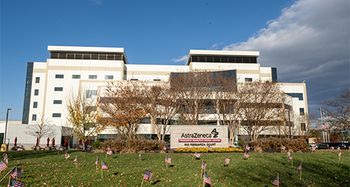
- Pharmaceutical Commerce - September 2009
Poor Demand Forecasting and Customer Collaboration Characterize Pharma S&OP
A potential savings of $46 billion in working capital is available to the industry, says Accenture study
About five years ago as fee-for-service agreements between manufacturers and wholesalers took hold, wholesalers were able to wring tens of billions of dollars’ worth of working capital from their businesses because they no longer kept excess inventory. Now, according to a new study from Accenture (New York), the same opportunity is in front of manufacturers themselves: By better managing their demand forecasting, they can reduce inventory by $46 billion worldwide—and possibly cut down the $4 billion wasted each year due to expired or obsolescent product.
“We found a number of areas that can drive significant improvements in supply chain performance, particularly planning and inventory management, supply chain performance tracking and better use of supporting technology, such as making full use of enterprise resource planning system capabilities,” observes Jared Walsh, a lead in Accenture’s Pharmaceuticals and Medical Products Supply Chain practice in North America.
Phase 2 of the study, already underway, will focus on contract manufacturing opportunities and secured supply chains.
Miscommunication and misforecasting
Two basic problems lie at the foundation of better supply chain management in bio-pharma: a lack of collaborative practices with downstream customers, and poor forecasting quality. In turn, these problems affect sales & operations planning (S&OP), leading to excessive inventory and missed forecasts. On average, manufacturers conduct collaborative planning with around 19% of their customers (representing 31% of sales volume), and where this collaboration exists, it tends to concentrate on relatively “superficial” items such as consensus forecasts, rather than “deep” collaboration like joint scheduling of operations (Fig. 1).
The lack of bilateral communication is one factor affecting forecasting accuracy; others are poor data quality, and possibly the inherent variability of product demand. The end result: average forecasting error ranges from 33% for generics manufacturers to 12% for biologics, with small-molecule pharm in between (Fig. 2). Accenture says that the industry “has made significant investments in demand-planning technology” but those who have done so cannot demonstrate better accuracy “than those who rely on simple extrapolations of past sales history, or even rule-of-thumb assessments.”
S&OP, by contrast, is characterized by fairly basic, manual tools like spreadsheets (60%), while a third are using ERP-integrated statistical modeling and the remainder off-line modeling (Fig. 3). Uncoordinated planning between functional silos “is the rule” for cost, service, scheduling and allocation factors. Thus, it’s no surprise that inventory levels remain high (Fig. 4).
According to Accenture, if inventory were reduced by 20%—a reasonable target—the working capital tied up in finished-goods inventory alone could be reduced by $46 billion. “Given the industry’s high margins, inventory reduction has not historically been a priority for pharmaceutical companies,” concludes Accenture. “But with increasing financial pressures throughout the industry, the ability to free up working capital is becoming an ever more attractive prospect.” Accenture emphasizes that this can be achieved without compromising the availability of life-saving drugs for patients.
Traditional pharma business managers have always pointed to the critical importance of safety stock for their patients’ well-being. And it is worth noting that there are shortages of critical medications even with this emphasis (the American Society of Health-System Pharmacists maintains a listing of these shortages as a matter of routine). But, to Accenture’s point, poor supply-chain management practices can themselves be a cause for shortages—if you don’t know how quickly your product is being consumed, you don’t know how much the market will need at some future date. More precise control of inventories and better demand forecasting could cure both oversupply and undersupply.
And—although it would require more-extensive collaboration with trading partners farther down the chain—the problem of expired or nearly expired product could be better addressed. HDMA data indicate that returns currently average 4.5%, which might be acceptable for high-volume consumer goods, but are problematic for high-value pharmaceuticals. (Recalls, because of FDA or manufacturer actions, are an additional stream.)
The findings were from the first phase of Accenture’s Global Pharmaceuticals Industry Supply Chain & Technical Operations Study, conducted under the guidance of a steering committee comprising of major pharmaceutical manufacturers. Study participants can obtain more-individualized analysis of their operations, a gap analysis of their performance relative to industry benchmarks, and access to a database of summarized responses. PC
Articles in this issue
about 16 years ago
Industry Feeds a Fever Over Cold Chain Regulationabout 16 years ago
Bristol-Myers Squibb, Roche Lead on Environmental Sustainability Scoringabout 16 years ago
Biopharma Needs to Adopt 'More Radical' Cost-Cutting, Says Capgeminiabout 16 years ago
GHX Electronic Trading Platform Gains More Healthcare Participationabout 16 years ago
Coupons, Vouchers and 'Loyalty' Cards Connect Drugmakers With Patientsabout 16 years ago
Market Researchers Offer Targeted but Economical Surveys, Fact-Findingabout 16 years ago
Industry Mergers Reshuffle Animal-Health LeadershipNewsletter
Stay ahead in the life sciences industry with Pharmaceutical Commerce, the latest news, trends, and strategies in drug distribution, commercialization, and market access.





